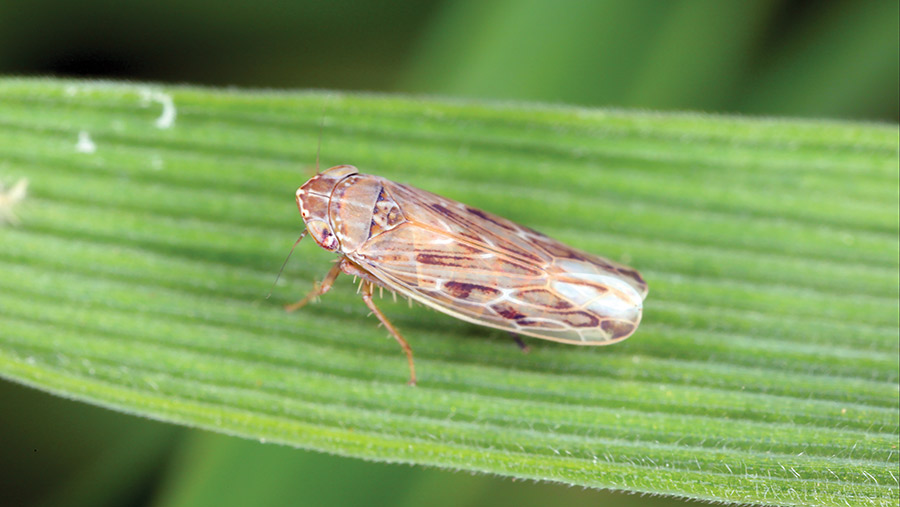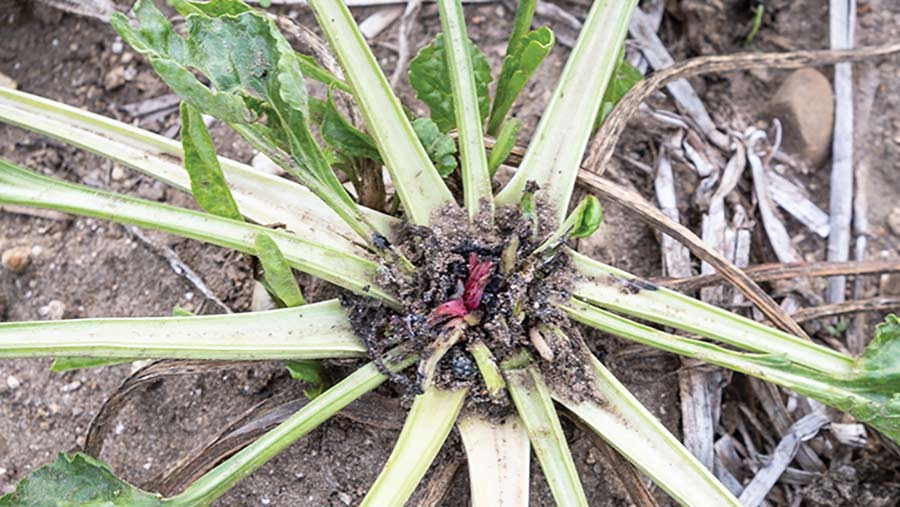How climate change may increase pest and disease threats
 © Adobe Stock
© Adobe Stock The changing climate is already bringing new challenges, and 2022 served as a prime example, with sugar beet crops hit by a moth while oilseed rape crops in the east suffered from large numbers of stem weevil.
Aphids are a key spreader of crop diseases and at the recent Association of Independent Crop Consultants conference, the BBRO’s head of science, Mark Stevens, highlighted that they were even flying on Christmas day.
See also: Three practical IPM strategies to help growers cut input costs
Warmer winters are resulting in earlier flights and he warned that warming during the key December, January and February window will have an effect on the following crop.
Data shows that a 1C warmer temperature in this period relates to flights being about 12 days earlier.
Mark said that the UK is unique in having a network of suction traps. This data will become increasingly vital as warmer winters see pests arrive ever earlier.
However, for beet crops, there isn’t the ability to drill much earlier to reduce risk to smaller, more vulnerable plants because of the 1 March cut-off for bolting risk.
It’s not just timing, numbers are rising too.
Mark pointed to data showing how in recent years the peach potato aphid has become much more abundant, having implications for diseases such as virus yellows, as well as those affecting other crops like turnip yellows in oilseed rape, and potato viruses.
The neonicotinoid seed treatments helped prevent big epidemics of virus yellows in beet and research is now catching up in finding new solutions. He reported that they are making progress.
But in the meantime, there is a reliance on the neonicotinoid seed treatment derogation, as yield losses can be up to 50%.

© Blackthron Arable
Beet pests
Climate change may also be affecting the prevalence of beet cyst nematode and British Beet Research Organisation investigations have started this year.
He believes they may be starting to see an uplift in BCN, perhaps due to moist soils in spring. Brassicas in cover crops mixes are also hosts, so could be a factor.
Mark explained that a 1C, 2C or 3C uplift could see four or five generations of beet cyst nematode a year over the current three, and this will have an impact on populations.
“There are tolerant varieties that can limit its impact, but it’s something we need to keep an eye on.”
Looking at new arrivals, 2022 saw perfect conditions for the beet moth, which is prevalent across other parts of Europe.
Eggs are laid in the heart and the larvae feed on the crown, causing damage.
Fortunately for the UK, “climate has been the saviour”. But the conditions in the hot summer of 2022 enabled numbers to build.
A first brood appeared in May/June, followed by a second, larger brood from late July to the end of September. Sea beet populations may also have a role.
Last year saw some warm spells, but the weather did not allow numbers to take off, even though larvae were seen this time last year.
He pointed out that the pest can survive down to -14C which is worrying as it could come back given the right summer conditions.
BBRO has started looking at the pest with pheromone trapping and trials will continue looking at the moth this year.
Oilseed rape
Looking at other crops, warming conditions will also have an impact on cabbage stem flea beetle.
Adas senior research entomologist Dr Sacha White said modelling work to identify the risk factors show autumn larval numbers increase with higher October temperatures.
Spring larval numbers were higher when:
- There were more than 129 cumulative degree days above 3.2C in December
- The average temperature in January is above 3.4C
However, Sacha says it’s not all bad as high rainfall can reduce larval pressure.
Another pest that caused problems in 2022 was rape winter stem weevil, resulting in crop failures.
High numbers were put down to loss of neonic seed treatments along with warm dry conditions.
He added that it could also be due to the beetle being misidentified, being confused with the similar looking cabbage stem flea beetle.
However, last autumn saw few reports, but he suggested it could possibly happen again with the right weather. Fortunately, pyrethroids still work and IPM measures may help.
Leafhoppers pose new disease threats
Leafhoppers could become as important as aphids under climate change and one key disease in particular is causing concern in Europe.
A new disease complex, basse richesse/rubber root disease, which some experts say could end sugar beet growing in parts of Europe is being spread by leafhoppers.
BBRO’s Prof Mark Stevens told the AICC conference that the disease is spreading rapidly in Germany, Poland, Switzerland and Austria.
The disease is caused by two different pathogens (Y-3 protobacterium and stolbur phytoplasma) with the leafhopper Pentastiridius leporinus being the key vector.
Symptoms are leaf yellowing similar to virus yellows, although it also causes roots to lose structure and break down.
The resulting roots can bend (become rubbery) meaning they can’t be chopped in the factory, and Mark says this is why it is serious.
“It is worrying as climate change could see it arrive in the UK.”
Another disease spread by leafhoppers is wheat dwarf virus, which affects wheat and barley crops. Dr Sacha White of Adas says he has seen some crops affected and it is spread by psammotettix alienus.
Symptoms are similar to barley yellow dwarf virus. It’s common in Europe, but rare in the UK, with crop infections detected in recent years in the East and South West.
He said the disease could possibly get worse if mild autumns continue, although insecticides are effective on leafhoppers and later drilling may help as they are more active in summer.
Mark Stevens and Sacha White were speaking at the recent Association Of Independent Crop Consultants conference, held hear Towcester

